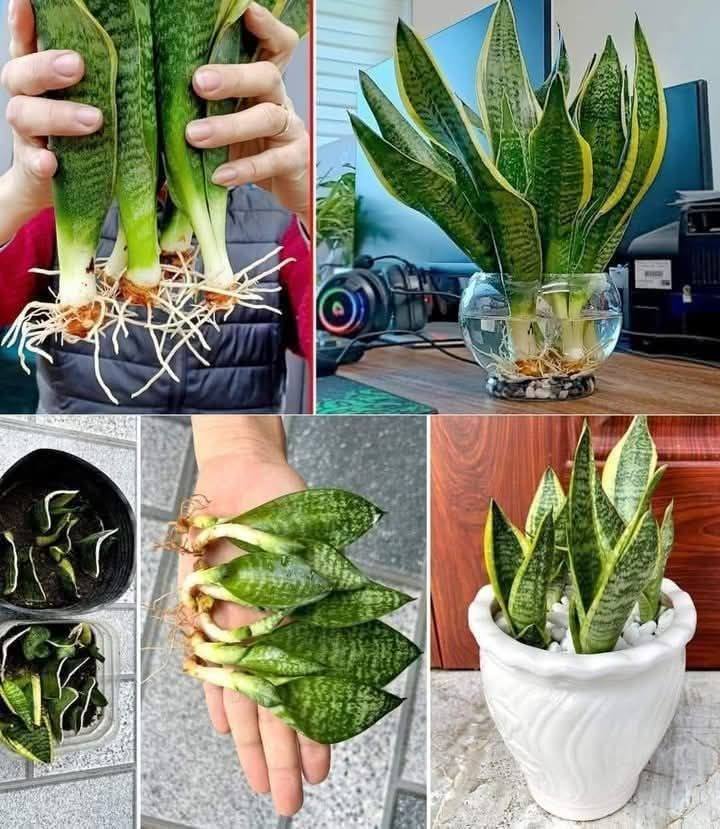ADVERTISEMENT
How to Propagate and Make Sansevieria: A Simple Guide to Growing the Perfect Snake Plant
Sansevieria, commonly known as the Snake Plant or Mother-in-Law’s Tongue, is one of the most resilient and low-maintenance houseplants out there. With its striking upright leaves, unique patterning, and air-purifying qualities, it’s no surprise that Sansevieria has become a favorite among indoor plant enthusiasts. What’s even better? Sansevieria is incredibly easy to propagate, meaning you can multiply your plant collection with minimal effort!
In this article, we will walk you through the best methods of propagating Sansevieria and provide helpful tips to ensure success. Whether you want to expand your own plant collection or share the beauty of this easy-going plant with friends and family, propagating Sansevieria is a rewarding and straightforward process.
Why Sansevieria is the Perfect Plant to Propagate
Before we dive into the how-to’s, let’s first explore why Sansevieria is such a great choice for propagation:
- Hardy and Low-Maintenance: Sansevieria is famous for its ability to thrive in various conditions, from low light to dry air. Its resilience makes it an excellent candidate for propagation, even for beginners.
- Air Purifying: Known for its ability to improve air quality by filtering out toxins, this plant is a natural air purifier, making it an excellent addition to any room.
- Attractive and Versatile: With its tall, striking leaves that range in colors from vibrant green to silver and yellow, the Sansevieria adds a modern aesthetic to any home or office space.
Types of Sansevieria
There are several types of Sansevieria you can propagate, including:
- Sansevieria Trifasciata (also known as the Snake Plant)
- Sansevieria cylindrica (commonly known as the African Spear Plant)
- Sansevieria hahnii (also called Bird’s Nest Snake Plant)
No matter which variety you have, the propagation methods remain relatively the same, making Sansevieria an easy plant to multiply!
Methods of Propagating Sansevieria
Sansevieria can be propagated in two primary ways: through leaf cuttings or by separating offsets (pups). Both methods are relatively simple, but each has its benefits. Let’s explore both!
Method 1: Propagating Sansevieria by Leaf Cuttings
Leaf cutting propagation is the most common method and involves cutting a healthy leaf into sections, allowing them to grow new roots and develop into new plants.
Materials Needed:
- A healthy Sansevieria leaf
- A sharp, clean knife or scissors
- A small container or pot with well-draining soil
- A glass or container with water (optional for rooting)
- Rooting hormone (optional but can encourage root growth)
Steps for Propagating Sansevieria by Leaf Cuttings:
- Select a Healthy Leaf: Choose a mature, healthy leaf from your Sansevieria plant. Avoid using leaves that are damaged, discolored, or too old. The leaf should be firm and vibrant.
- Cut the Leaf into Sections: Using a sharp knife or scissors, cut the leaf into sections. Each section should be around 4–6 inches long. Be sure to make the cuts as straight as possible.
- Let the Cuttings Callous Over: Once you’ve cut the leaf, let the sections sit out in a dry place for about 1-2 days. This allows the cut edges to callous over, reducing the risk of rot when they are placed in soil or water.
- Prepare the Rooting Medium: You can root the cuttings in water or directly in soil. Both methods work, but water propagation allows you to monitor root development. If rooting in soil, use a small pot with well-draining cactus or succulent soil.
- For water propagation, place the cut end of the leaf in a glass of water. Make sure the water level is below the cut edge to prevent rot.
- For soil propagation, place the cuttings directly into the soil, making sure the cut edge is buried slightly.
- Place in a Warm, Bright Spot: Place the cuttings in a warm location with bright, indirect light. Avoid direct sunlight, as it may scorch the leaves. Be patient, as it can take a few weeks for roots to begin forming.
- Wait for Roots to Develop: If rooting in water, change the water every few days to keep it fresh. Once roots are about 1-2 inches long (usually within 3-4 weeks), you can transplant the cutting into a pot with soil.
- Pot and Care for New Plant: Once the roots have developed, place the cutting into a pot with well-draining soil, and water lightly. After a few weeks, your new Sansevieria plant should begin to establish itself.
Method 2: Propagating Sansevieria by Offsets (Pups)
Sansevieria naturally produces offsets, or “pups,” which are small plantlets that grow at the base of the mature plant. These pups can be separated and transplanted into their own pots, making this a very easy and foolproof way to propagate Sansevieria.
For Complete Cooking STEPS Please Head On Over To Next Page Or Open button (>) and don’t forget to SHARE with your Facebook friends
